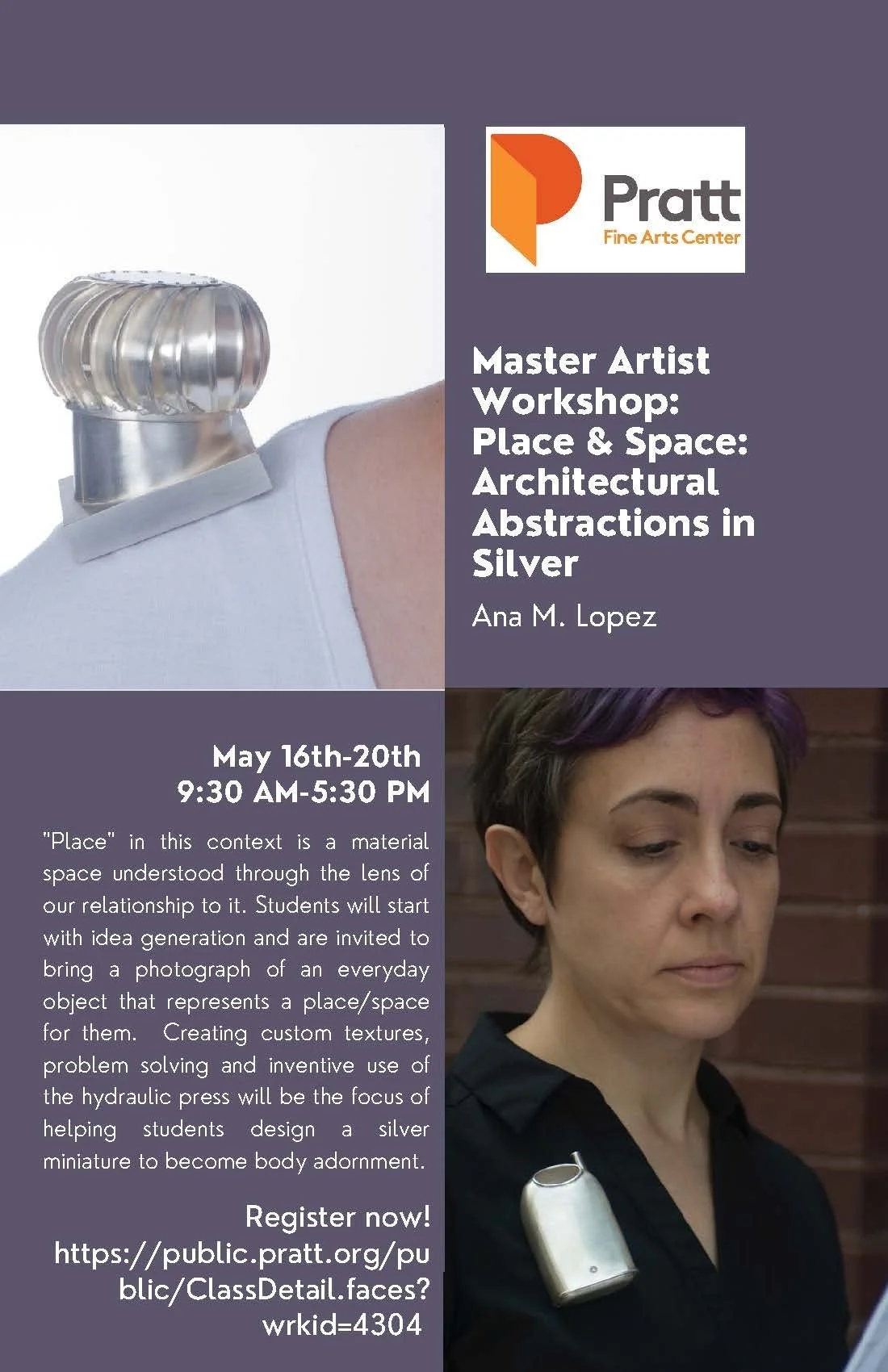Come join me in Seattle to make meaningful metal miniatures!
College Art Association Talk
I am so excited to be going to New York next week to speak at the College Art Association conference! I will take part in the session, Wish You Were Here: The Souvenir as Emblem of Regional Identity. If you are in the neighborhood, please stop by! My panel was put together by Christopher J. Moore of Concordia University and Isabel Prochner of Syracuse University. It will take place Wednesday the 13th at 10:30 am at the New York Hilton Midtown - 2nd Floor - Nassau East. I will be presenting my body of work, You Are (the) Here and its relationship to cultural geography, personal identity, and the souvenir.
Photo by Chenli Ye
Versailles Gate Ring
All the luxury and impracticality of the Ancien Regime, at your fingertips!
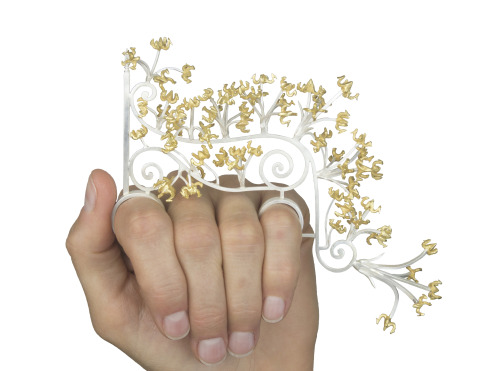
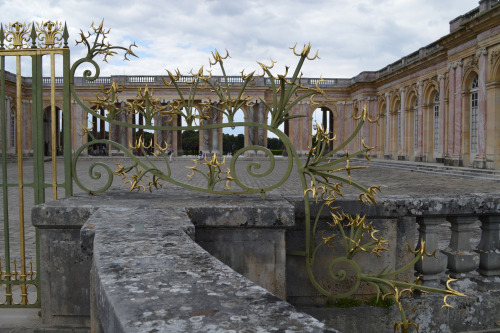
4.75 x 5 x 1.5"
Sterling silver with 22K gold overlay
Thanks to apprentices Kirsten Kulland, Anna Aparicio and Tammy Nguyen who all helped make it happen.
You Are (the) Here: London
This was the final city to be visited for this stage of the You Are (the) Here project. Although I had been to London on two previous occasions, I reasoned that a significant enough period of time had elapsed for me to be able to see the city afresh. However, there was still a familiarity due to similarities of language and culture that rendered much of London less remarkable than the previous three cities by comparison. This is not to say that I did not thoroughly enjoy myself or see a great many new and magnificent objects of metalsmithing and other decorative arts. But after having lived in New York City a few times, London could not help but feel the most familiar of the four locations in this project. And I cannot be insensible to the fact that such a familiarity might have brought a certain amount of blindness to my surroundings. When one is surrounded by the strange and novel, I believe one notices more. However something of the pattern established by the first three cities probably also guided my observations, as you will notice that I found another bollard that I like. As for museums, I spent more than ten hours at the Victoria and Albert Museum, which has stolen the title of “My Favorite Museum” from the Metropolitan Museum of Art. The Crown Jewels, Design Museum, and British Museum were also delightful but could not hold a candle to the V&A. The following objects are likely to become the representations of London for this project, with the cylindrical, ceramic chimneys being the main representational object. I like the subtle reference to the British ceramic industry and found the variety of shapes delightful. As for the wall images, I was responding to the variety of sizes and textures in their composition and their testimony to the layers of history that abound in the city.





You Are (the) Here: Dresden
Of the three cities I have visited for the You Are (the) Here project thus far, Dresden was the hardest one in which to find a representative subject. This was partly due to the close proximity of my hotel to most of the sites I was interested in seeing, which resulted in a reduced scope of experience. The Green Vault, New Green Vault and Armory were within a block of each other and flanked by other delightful collections of decorative arts. The fact that Dresden was nearly destroyed by an Allied bombing in February of 1945 meant that this city’s rich history is somewhat belied by relatively recent reconstruction. What would serve as a reminder of my experience of Dresden? What object’s likeness might be used to create a handmade, personal souvenir of this city? The thing that stood out to me, over and over, was the contrast of old and new stones used in the reconstruction of historic edifices. In a cropped view, these patchworks of dark and light create a minimalist grid of contrasts. In reality they are the perfect representation of a city that had to rebuild from almost nothing in some places. I found the story of the Frauenkirche particularly moving. Computer-imaging technologies were used to place the remaining stones in their original locations in time for the city’s 800th birthday.

In all I plan to make six broaches representing various brick compositions that I photographed around town. I will use engraved cross-hatched lines to depict the darker stones.
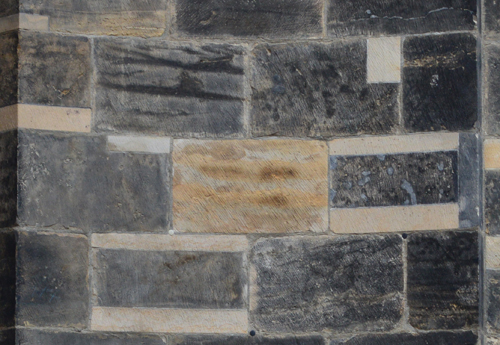
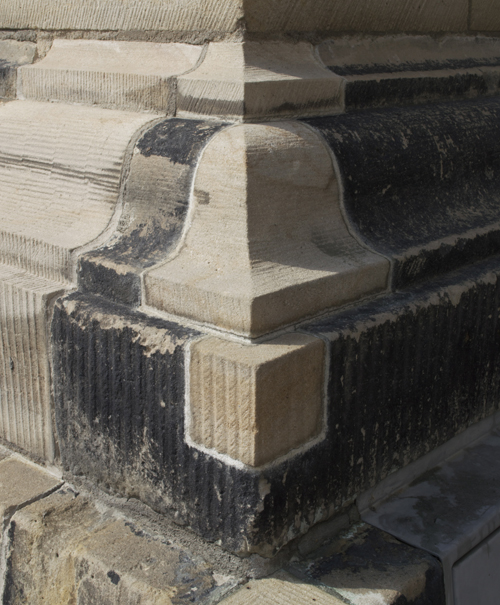
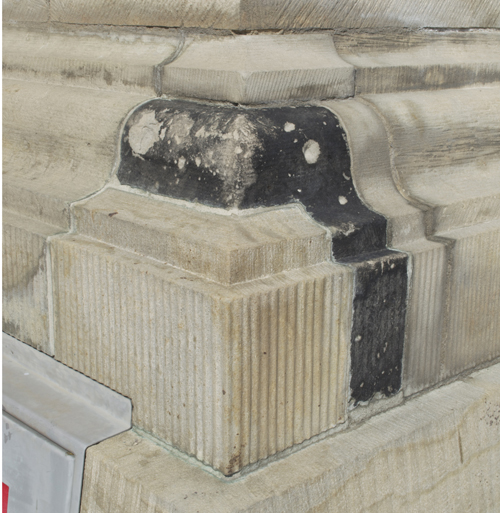
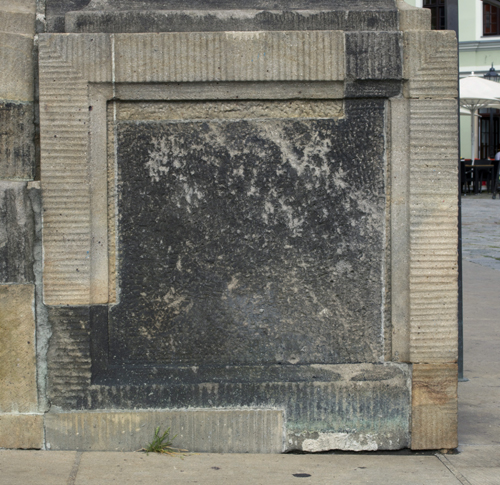
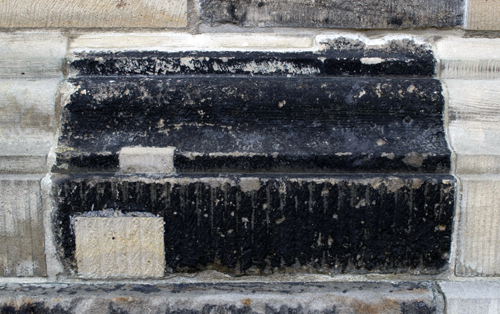
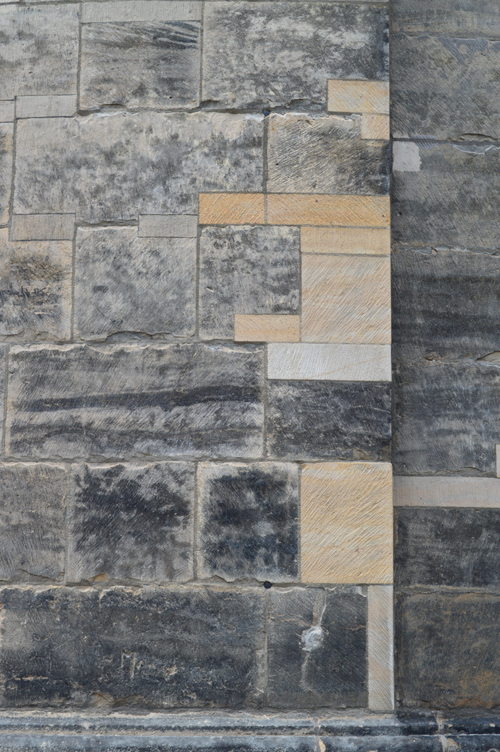
I only found one additional urban element that seemed to want to be a piece of jewelry:
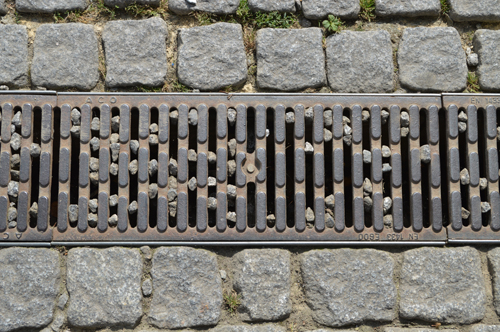
Don't you think this grating wants to be a bracelet?
You Are (the) Here: Vienna
You Are (the) Here: Vienna
The collections of secular and sacred metalworking in and around Vienna were overwhelming. As a system of government, monarchies might have some issues but man-oh-man can they turn out some lavish metalwork! I am sorry to say that Cellini’s saliera was not on view and no amount of throwing my (limited) weight around got me access to it. However, Nicholas of Verdun’s altarpiece was incredibly moving and the silver cabinet of the central palace was awe-inspiring. What I always think about in such places is the hours and hours of human inventiveness and skill that went into the collected works.
The public element in Vienna that I chose to use for its representation in the You Are (the) Here project came quite easily. I was delighted to find that their older fire hydrants resemble bishops from a chess game. These were frequently accompanied by similarly sculpted bollards to keep cars out of a pedestrian area. The combination of a larger hydrant balanced by a series of slightly smaller bollards as a counterweights to one another sounded like a great opportunity for a necklace. Furthermore, the two-sided ornament may reference the position of Austria as a link between Eastern and Western European Cultures.

As in Paris, there were a number of side items that will probably end up getting translated on the jeweler’s bench as well.



You Are (the) Here: Paris
I proposed this series of objects based on past experiences of having developed relationships with new cities through travel. Supposing this would happen again in each new city, I was a little unsure of how long it would take to find a personal representation of place; a signifier of the city that was more individualistically based than the famous masterpieces and landmarks. In my first city, Paris, I did indeed wonder on the first day how one person could possibly build a relationship with such a rich territory within the confines of a week and worried that the basis of my inquiry was on a flawed schedule. But in the third day, exhausted form walking, armed with an inadequate map and wandering the lesser known streets of this metropolis, I finally wended my way back to a familiar landmark: a series of contiguous arches housing retail spaces. This series of archways was, I knew, two blocks from my hotel. Once I saw them I knew my feet were minutes from relief. As my navigation improved, it was the sight of this viaduct each day that told me that I was close to refuge - the temporary home that all travelers create for themselves in the short term space of a hotel stay. This would represent my personal experience of Paris.
Later in the week I explored my immediate vicinity more, having already conquered some of the greater entombments of art history. In doing so I realized that the viaduct is even more appropriate as a representative object for this project because it has been styled as the Viaduct of the Arts. What I had not initially realized was that most of the retail spaces there were devoted to various forms of design and artisanry. An old elevated train line to Vincennes was repurposed in the eighties to form a public park on the top and retail arcades below. The businesses that occupy the arched spaces include painters of porcelain, restorers of textiles musical instruments and furniture, interior and furniture designers and more. The more often I passed this the more I noticed evidence of creative acts, such as a glass kiln still glowing at its door’s edges in the early morning.
Once the reference point was chosen the next question arose: how to graft it upon a human form? The key consideration in this instance was its linear nature. Although the idea of a tiara was initially very appealing, I decided that imposing a curve on this series of vaults took it too far from its original state. After all, I was already planning on shrinking it and rendering it in silver. The solution I came up with was suggested by the form itself. Although the Viaduct of the Arts has some fifty store fronts, the section that I passed regularly, punctuated by a road on each end, has only twenty-eight. Every seventh archway is followed by an additional vertical architectural element. I therefore plan to make a square necklace, hinged beneath these three already-occurring breaks with ends that meet as a clasp. When the necklace is not worn it may be displayed in a linear format, as in reality. While documenting the street view, I also noticed that the western end of the viaduct is slightly higher than the eastern end, undoubtedly as an adaptation to the underlying geographies involved. This means that the two ends that meet at the clasp will be of unequal heights. I am very much looking forward to getting into my studio to make this a physical reality.
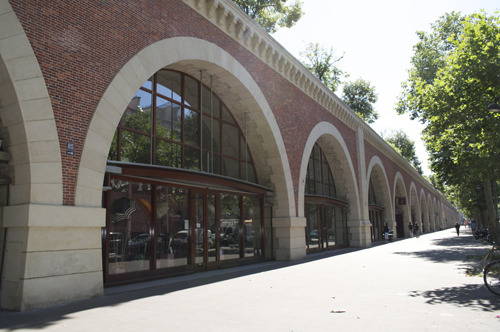
Also, as I traveled within the city I saw several elements of the urban landscape that caught my eye and that I thought were suggestive of jewelry. I have decided to make a few supplemental pieces of jewelry from these little details. I do not consider them to be at the center of the You Are (the) Here project, but ancillary points of personal interest. After all, who would not want to wear one of the little triangular vents I found at the back of the columns in the Grand Trianon?
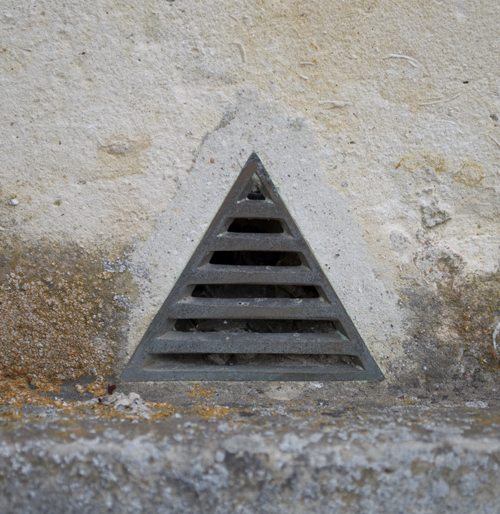
or a nice subway vent?
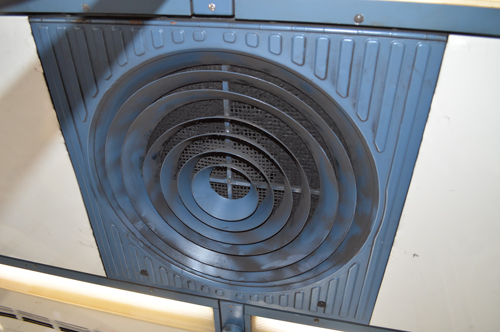
And don't these look like they want to be earrings to you?

Next stop, Vienna!
You Are (the) Here (2)
This summer and fall I am visiting four cities that are home to exceptional collections of decorative arts. While I play the part of tourist, visiting historic sites and buying souvenirs, I develop a relationship with each new and hereto unfamiliar city. The urban passages that are particular to my time in each city render aspects more familiar and, over the course of a week, personal landmarks develop. Not the monuments of postcards and keychains but familiar elements that become signifiers of place in a practical and meaningful way. I will then design a means by which the chosen feature might be assimilated to my body as ornament. I will photograph, sketch and create models of the element that will then be transformed, upon return to my studio, through the highly skilled fabrication techniques of silversmithing.
I will be visiting the following historical masterpieces and collections of metalsmtihing:
- Rene Lalique and Limoges enamels (among others) at the Decorative Arts Museum, and Louvre in Paris, France
- Benvenuto Cellini's Saliera and other treasures of the Kunsthistorisches Museumm Vienna, Austria
- Johan Melchior Dinglinger's Royal Household of the Grand Mogul and other masterpieces at the Historical Green Vault and New Green Vault in Dresden, Germany
- ?
You Are (the) Here
I am about to expand upon a new series of artworks that explore the cultural construction of identity through personal adornment. It will result in four wearable metal objects and related imagery and will be completed during my development leave this fall. This series, You Are (the) Here, is inspired by the historic relationship between body adornment, the idealized self and the souvenir that has been indicated by such things as pilgrimage badges of the middle ages, neoclassical dress in the court of Napoleon Bonaparte and nineteenth century micro-mosaic jewelry. Jewelry as a format of expression is inherently defined in relationship to human scale and therefore to the human experience. In this multivalent program of research, manmade public elements that have become particular and familiar through repeated contact are used as personalized signifiers of place. These are rendered in miniature in painstaking detail and precious materials to become body adornment that may be used by the wearer to take on the constructed identities of these personal/public spaces.
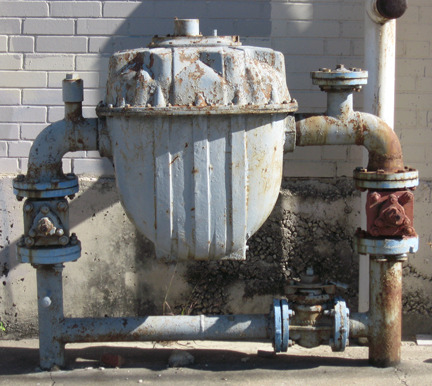
It all began with a gas meter.
I pass this every day that I take my daughter to or retrieve her from daycare. Located behind an industrial building, the wall behind is an easy and frequently used target for spray painters. Each time the wall receives these unauthorized markings, the city is contacted and a crew paints over the newest batch. Apparently the city of Fort Worth has a handful of different “neutral” shades that they use to cover up these markings and the paints used have not remained consistent to the site. The result is a warehouse-size color field painting in neutral tones. This serves as the backdrop for the now-familiar gas meter. Most weekdays I pass, noticing the changes to the wall, admiring the effect and how it seems to stage the gas meter and make it special.This went on for some time before it hit me: the gas meter wants to be a bracelet. And I want to wear it.
To be continued...
